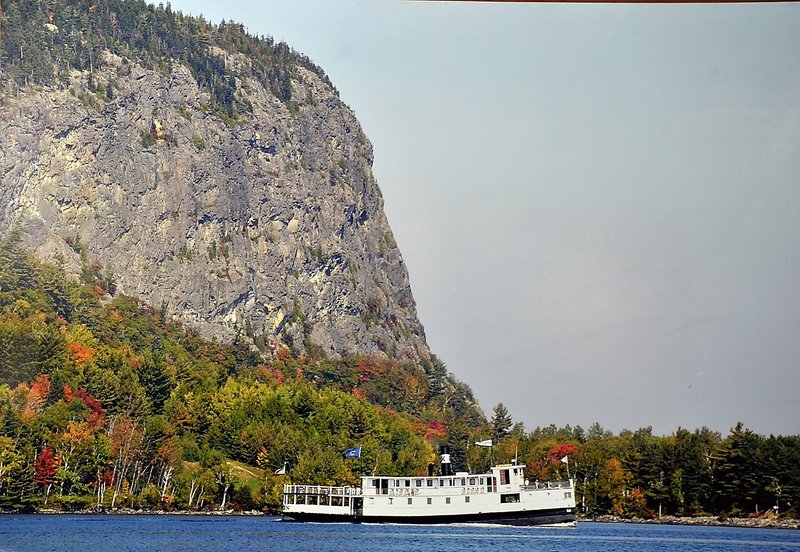Like many who grow up in Maine, I was raised with a love of the outdoors — of the woods and lands in this state.
When we think of Maine, each of us has a special place that comes to mind. But what few of us know is that many of these places were preserved with a state program that has quietly become one of the most effective in the nation — both at protecting land and also at providing real value to Maine’s taxpayers.
The Land for Maine’s Future program began in 1987 and since then, funding from it has helped communities protect more than 550,000 acres.
What we recently found was hard data which prove that LMF is not only good for our land, but it is also a wise investment.
Each dollar invested by the fund in Maine returns $11 in natural goods and services to Mainers. A surprising finding, indeed, because this is a higher rate of return than any similar program in the nation.
How do I know this? Because I did the analysis, on behalf of The Trust for Public Land, which since 1993 has worked to protect land for people in this state.
I grew up in Skowhegan, where my dad and uncles worked at the Sappi Fine Paper mill. I went to the University of Maine, and received a master’s degree in ecology and environmental sciences. After moving away, I returned four years ago after joining The Trust for Public Land as the staff economist, charged with analyzing the economic benefits of protecting land.
Our team has looked at land conservation efforts from Arizona to New Jersey, trying to provide hard numbers that quantify the return on investment to taxpayers. We look at a variety of factors, such as the value of water quality protection, cost of flood control, and the value of wildlife habitat. And in state after state, we have found that for every $1 spent, taxpayers receive benefits worth between $4 and $10.
Why is the return in Maine higher? There are a number of factors.
Three of the main factors are the program’s longevity, the relatively low cost of rural land here and the strategic selection of the types of lands conserved.
The program began a quarter-century ago and each acre of land conserved accrues benefits every year from date of purchase to today.
Not only that, those lands will continue to provide benefits into the future for us and our children to enjoy. Our team reviewed projects covering 550,000 acres in Maine and found that the cost of those acres acquired with LMF funds was only $113 per acre, which is less than in other states.
LMF has conserved working lands that are important to our state’s economy: farmlands and forestlands supporting local markets and mills, lands that provide recreational access and the working waterfronts dotting our coast and providing crucial access to the sea for fishermen.
Protecting these landscapes protects jobs. For example, forestry and logging directly employ 2,500 people, while related manufacturing, such as the Sappi paper mill where my dad worked, give jobs to almost 13,000 more Mainers. Farming and related businesses employ another 8,000 people, while tourism and recreation are the source of 26,000 more jobs.
Today, the LMF program is out of money. Unless the Legislature and Gov. LePage agree to provide money this year for the program, its future is hazy.
Recent polls show 88 percent of Mainers believe our economy relies on the quality of our natural resources, a view which our research shows is based on solid economic evidence.
When given the chance to vote on the Land for Maine’s Future program, Mainers of all political stripes have strongly supported it at the ballot box.
I realize the men and women who represent us in Augusta have to make difficult decisions and cannot fund everything we want. But we should continue to support cost-effective programs that employ Mainers. And the LMF is one of the most cost-efficient programs, not just in Maine but anywhere in America.
Plus, the LMF program isn’t just about protecting the places we love, the lands that I missed for those few years when I lived out of state. From a pure dollars and cents standpoint, it is about continuing to support jobs and local economies.
Like auto insurance and those pesky trash bags, the individual mandate creatively addresses social and economic problems that have long defied other solutions and that stand to endanger all of us if not addressed.
Jessica Sargent-Michaud lives in York. She is director of conservation economics at The Trust for Public Land. The full study can be found at www.tpl.org/maine.
Send questions/comments to the editors.



Success. Please wait for the page to reload. If the page does not reload within 5 seconds, please refresh the page.
Enter your email and password to access comments.
Hi, to comment on stories you must . This profile is in addition to your subscription and website login.
Already have a commenting profile? .
Invalid username/password.
Please check your email to confirm and complete your registration.
Only subscribers are eligible to post comments. Please subscribe or login first for digital access. Here’s why.
Use the form below to reset your password. When you've submitted your account email, we will send an email with a reset code.